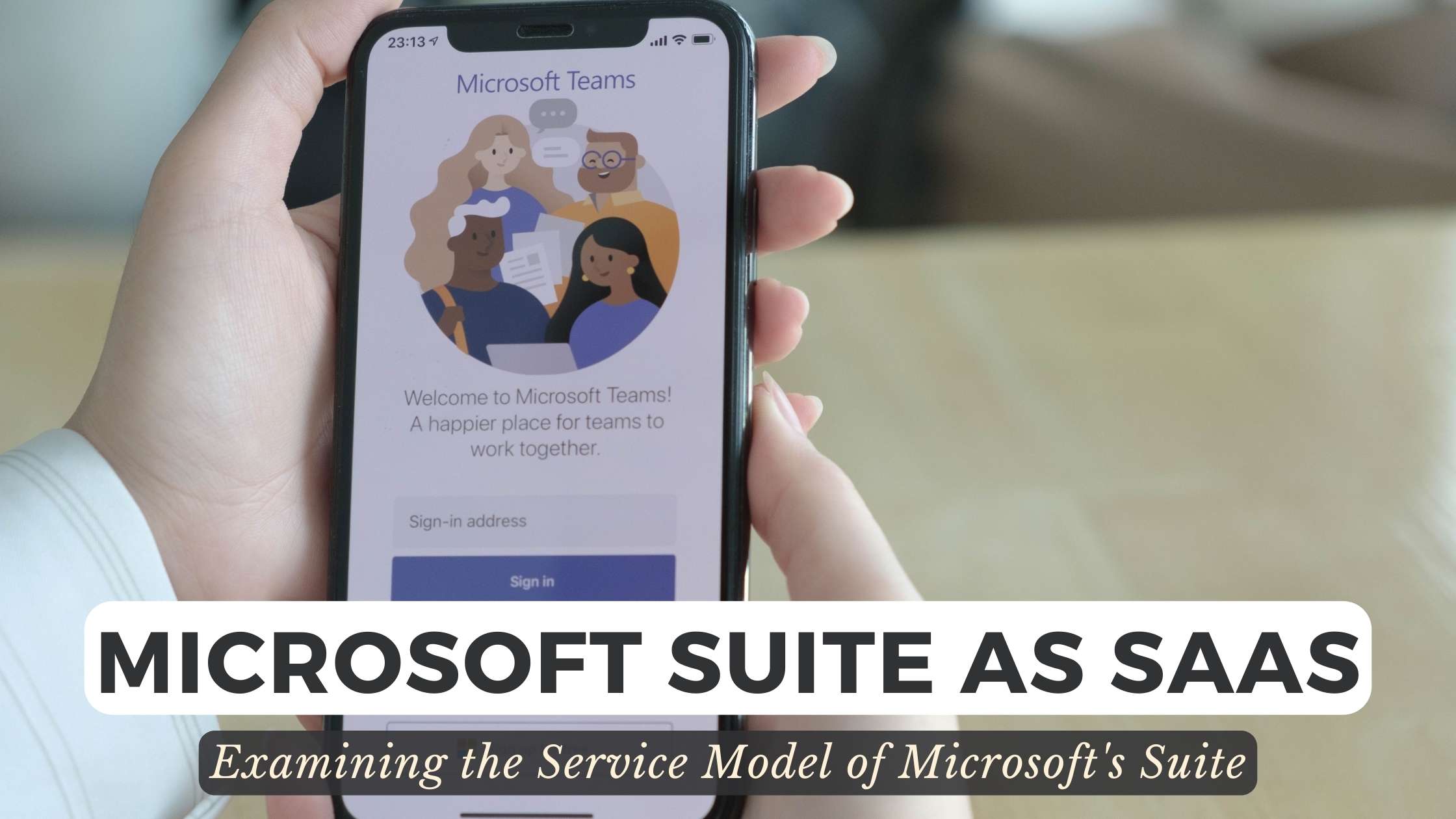Microsoft Suite as SaaS: Examining the Service Model of Microsoft’s Suite
- Expense Management Software Credit Cards Investing Business Solutions


Microsoft Suite as SaaS: Examining the Service Model of Microsoft’s Suite
In the ever-evolving landscape of productivity tools, Microsoft Suite has transformed its service model to embrace Software as a Service (SaaS) principles. This article aims to dissect the intricate details of Microsoft Suite’s transition into SaaS, providing comprehensive insights into its architecture, features, and the common queries surrounding its classification.
Unveiling Microsoft Suite’s SaaS Architecture
Subscription-Based Access:
Microsoft Suite has shifted from traditional software purchasing models to a subscription-based approach. This evolution allows users to subscribe to Microsoft 365, granting them continuous access to the latest application versions, regular updates, and additional cloud-based features.
Cloud Integration:
Integral to the SaaS model is cloud integration, a concept Microsoft Suite fully embraces. The suite’s applications seamlessly integrate with OneDrive, facilitating real-time collaboration and file accessibility across various devices. This cloud-centric approach not only enhances mobility but also ensures robust data security.
Continuous Updates and Maintenance:
One hallmark of SaaS solutions is the centralized management of updates and maintenance. Microsoft Suite, as part of Microsoft 365, receives regular updates featuring new functionalities, security patches, and overall improvements. This approach ensures users always have access to the latest capabilities without manual interventions.
Collaboration Features:
SaaS emphasizes collaboration, and Microsoft Suite reflects this ethos. Real-time co-authoring, file sharing, and communication through integrated apps like Teams create a collaborative environment, aligning with the evolving nature of modern work, especially in remote settings.
Device-Agnostic Accessibility:
The SaaS model prioritizes accessibility from any device with internet connectivity, a principle seamlessly followed by Microsoft Suite. Users can access applications and files from desktops, laptops, tablets, and smartphones, offering unparalleled flexibility and ensuring a consistent user experience.
Is Microsoft Suite a SaaS? Dispelling Common Queries
Microsoft 365 Subscription Model:
The subscription-based model of Microsoft 365 is a clear indicator of its SaaS nature. Users subscribe to a recurring payment plan, ensuring continuous access to Microsoft Suite applications and associated cloud services.
Cloud-Centric Infrastructure:
The integration of cloud services, such as OneDrive and SharePoint, is a defining characteristic of Microsoft Suite as a SaaS solution. The combination of cloud storage and collaborative features exemplifies the SaaS paradigm.
Regular Feature Updates:
Microsoft Suite’s continuous updates and feature enhancements without manual installations align precisely with the SaaS model. Users benefit from ongoing improvements seamlessly incorporated into their workflow.
Scalability and Flexibility:
SaaS solutions are known for their scalability and flexibility, and Microsoft Suite’s subscription model perfectly embodies these traits. Organizations can scale their usage based on evolving needs, ensuring cost-efficiency.
Centralized Maintenance:
The centralized management of updates and maintenance by Microsoft is a key attribute of SaaS. This approach allows users to focus on utilizing the applications while the provider ensures the integrity of the underlying infrastructure.
Relevant SaaS Products Enhancing Productivity
In the expansive realm of SaaS, several products complement Microsoft Suite, offering enhanced productivity and collaboration:
- Asana: This project management tool seamlessly integrates with Microsoft Suite, providing detailed task and project tracking capabilities.
- Zoom: For virtual meetings and webinars, Zoom complements Microsoft Teams, offering a robust platform for video conferencing and collaboration.
- Trello: Ideal for project management and collaboration, Trello integrates well with Microsoft Suite, enhancing visual task management.
- DocuSign: Streamlining document signing processes, DocuSign integrates with Microsoft Suite, facilitating secure and efficient electronic signatures.
- Slack: As a communication hub, Slack integrates seamlessly with Microsoft Suite, providing a centralized platform for team collaboration.
Conclusion: Microsoft Suite’s Evolution into SaaS
In conclusion, Microsoft Suite’s journey into the realm of SaaS reflects its commitment to staying abreast of technological shifts. Its subscription-based model, cloud integration, and collaborative features epitomize the principles of SaaS, addressing the dynamic needs of modern workplaces. Embracing Microsoft Suite within a curated SaaS stack, complemented by tools mentioned above, fosters enhanced productivity and collaboration, paving the way for a dynamic digital future.
In the complex landscape of managing a SaaS stack, Subscribed.FYI emerges as a valuable resource. This platform facilitates understanding, comparison, and management of SaaS tools, aligning with the objectives of businesses relying on Microsoft Suite and other cloud-based solutions.
Relevant Links:





